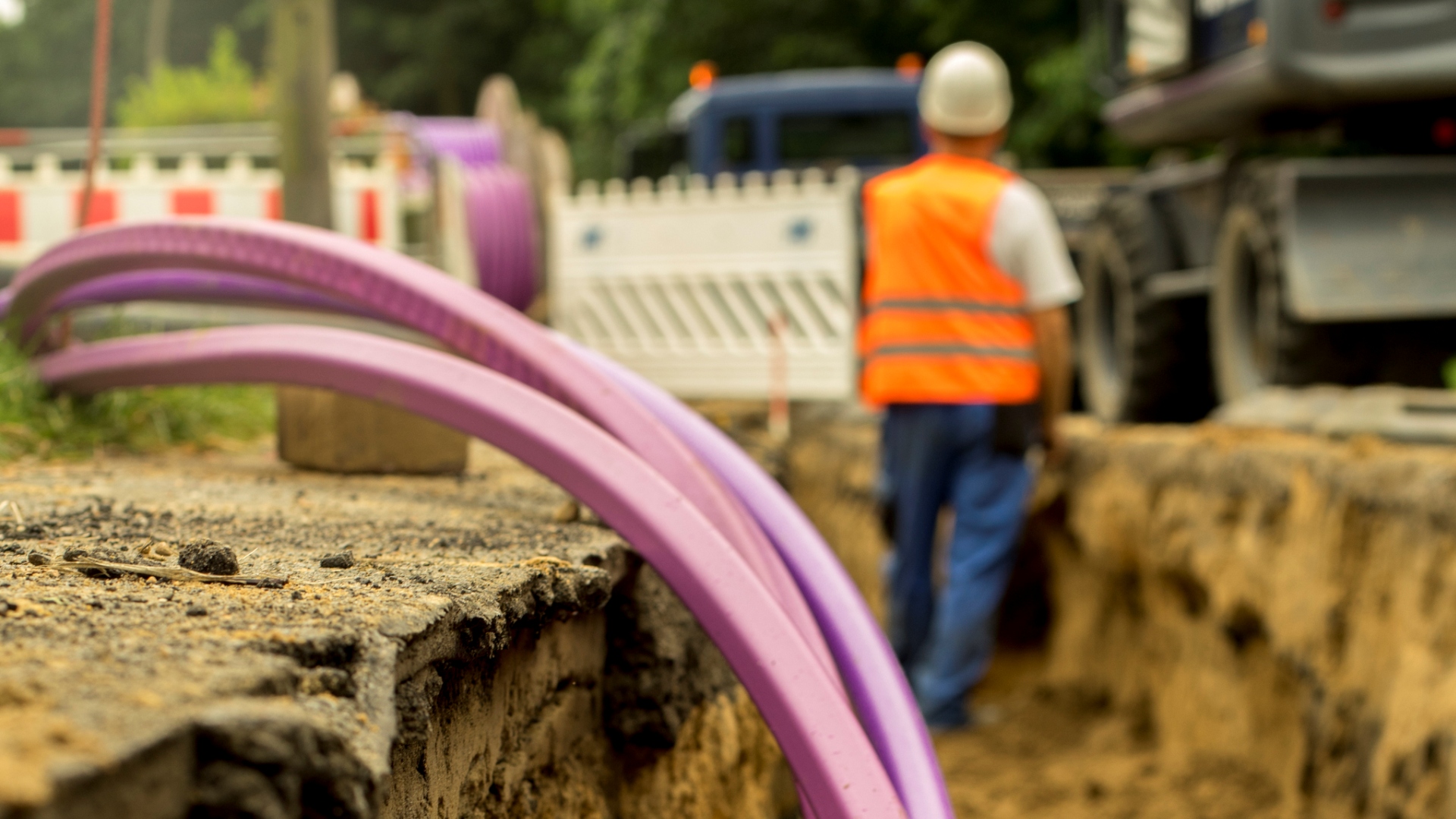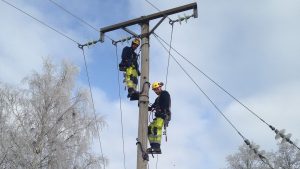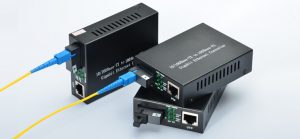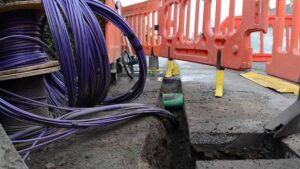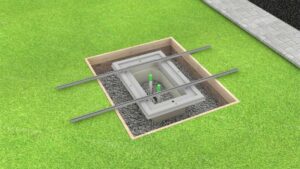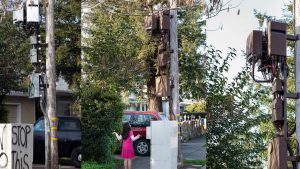The main types of detecting devices available can be classed as follows:
Hum detecting devices are receiving instruments that detect the magnetic field radiated by electricity cables which have a current flowing through them. They do not respond to:
- Cables where there is little or no current flowing; for example, service connection cables to unoccupied premises or street lighting cables in the daytime.
- Direct current cables.
- Some well balanced high-voltage cables, where these generate relatively little field (which in turn may be further screened by the cable sheathing);
- pot-ended cables.
Radio frequency detectors are receiving instruments that respond to low frequency radio signals, which may be picked up and re-emitted by long metallic pipes and cables.
If radio frequency detection is used, other metallic objects such as abandoned pipes, cables and tram tracks may re-radiate the signal and results may vary appreciably according to locality, length of the underground cable or pipe and distance from the termination and geographical orientation.
Transmitter/receiver instruments, where a small portable transmitter or signal generator can be connected to a cable or pipe, or placed very close to it so that the signal is introduced into it. The receiver, typically the same radio frequency detectors mentioned above, can then detect this signal.
Usually the location of some part of the cable or pipe needs to be already known so that the transmitter can be properly positioned. A direct connection is not required but accuracy will be greatly improved if a direct connection can be made.
Some signal generators can be sent along pipes. They can provide useful information in difficult situations where the techniques using hum detectors and radio frequency detectors have not been successful. Use of signal generators will significantly increase the accuracy of the service location.
Metal detectors are conventional detectors, which will usually locate flat metal covers, joint boxes etc, but may well miss round cables or pipes.
Ground probing radar is a method capable of detecting anomalies in the ground. When these anomalies can be plotted into a continuous line it may indicate a cable, duct or pipe.
However, this technique alone would not determine the precise nature of the service and it should be supported by information available about the services present and also, preferably, by the use of other more conventional forms of detecting device.
Knowledge of ground conditions is important. For example, false readings are most likely where there are boulders and debris in the ground or where the ground has often been disturbed. Because of equipment costs and the need for specialist training it may be cost-effective to use firms specializing in this technique.
Radio frequency identification (RFID) is a system increasingly used to mark or ‘tag’ new services. These markers can be programmed with information about the particular service and its depth, and this information can be read by detecting devices.
The accuracy of the information depends on the marker being properly attached to the service. As a developing system, RFID will often be found on new services so will not necessarily assist with older services. RFID marker systems may require specific detecting tools that may not be compatible with one another.
Some instruments use more than one of the technologies listed and may include a depth-measuring facility.

